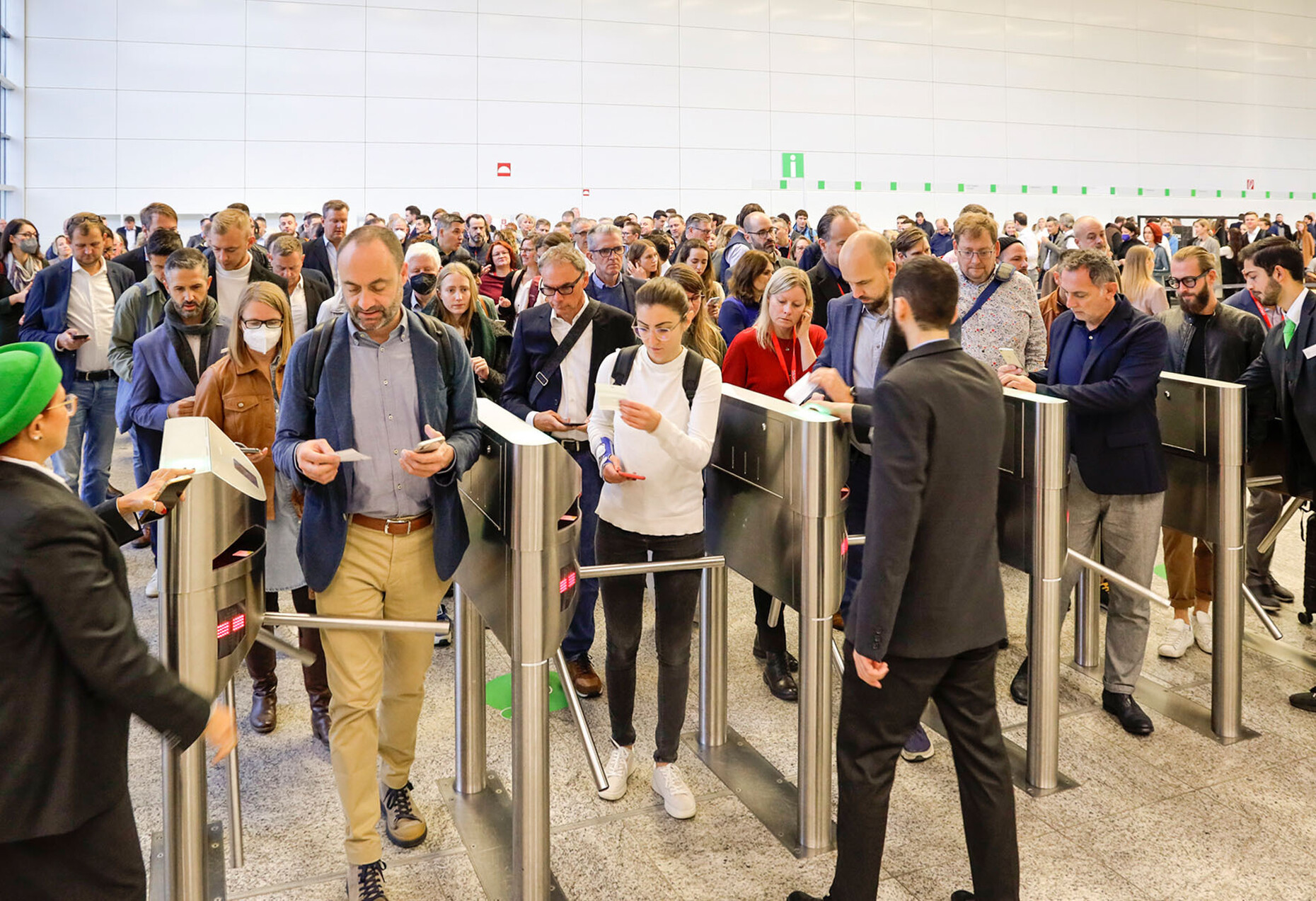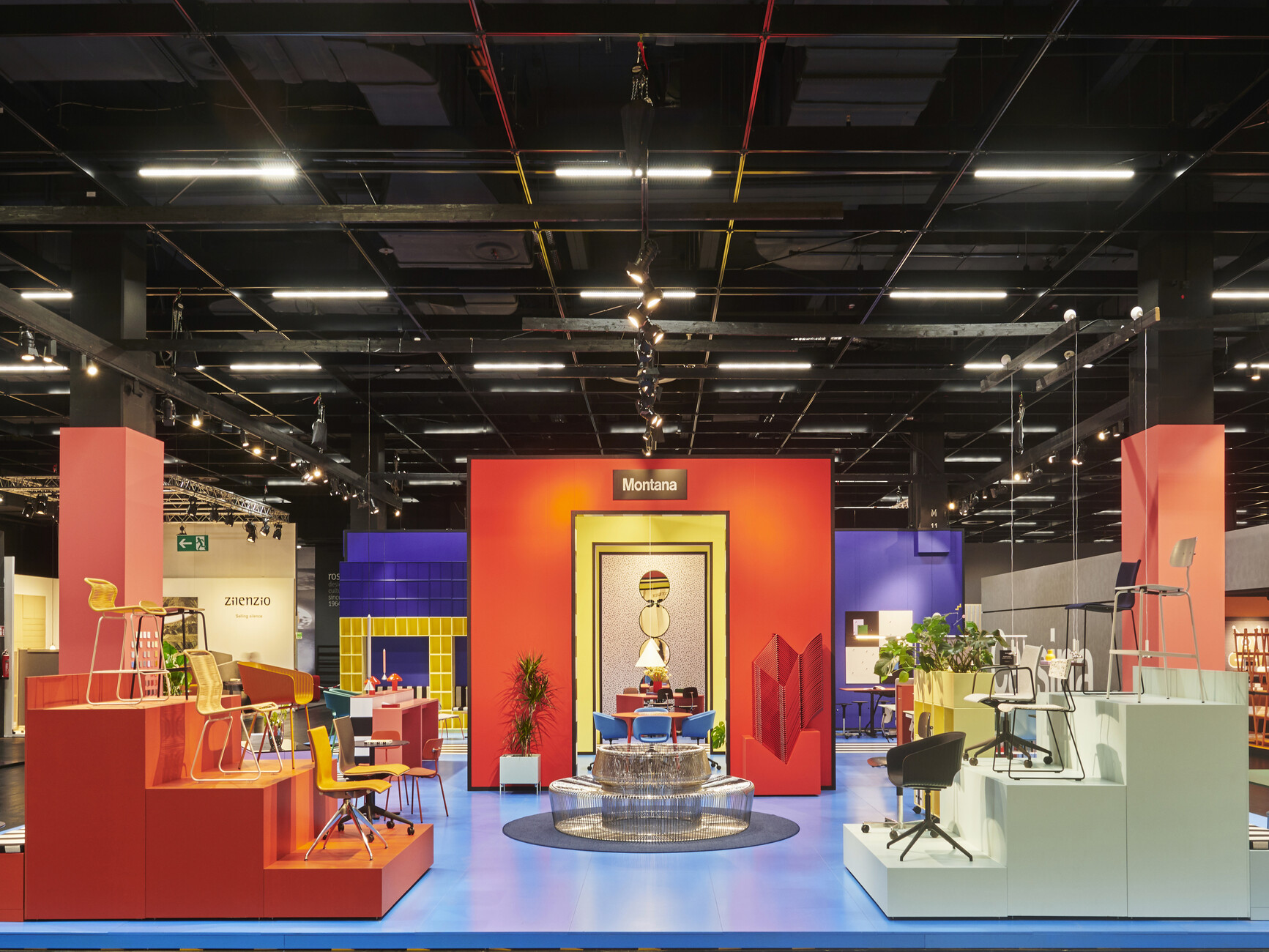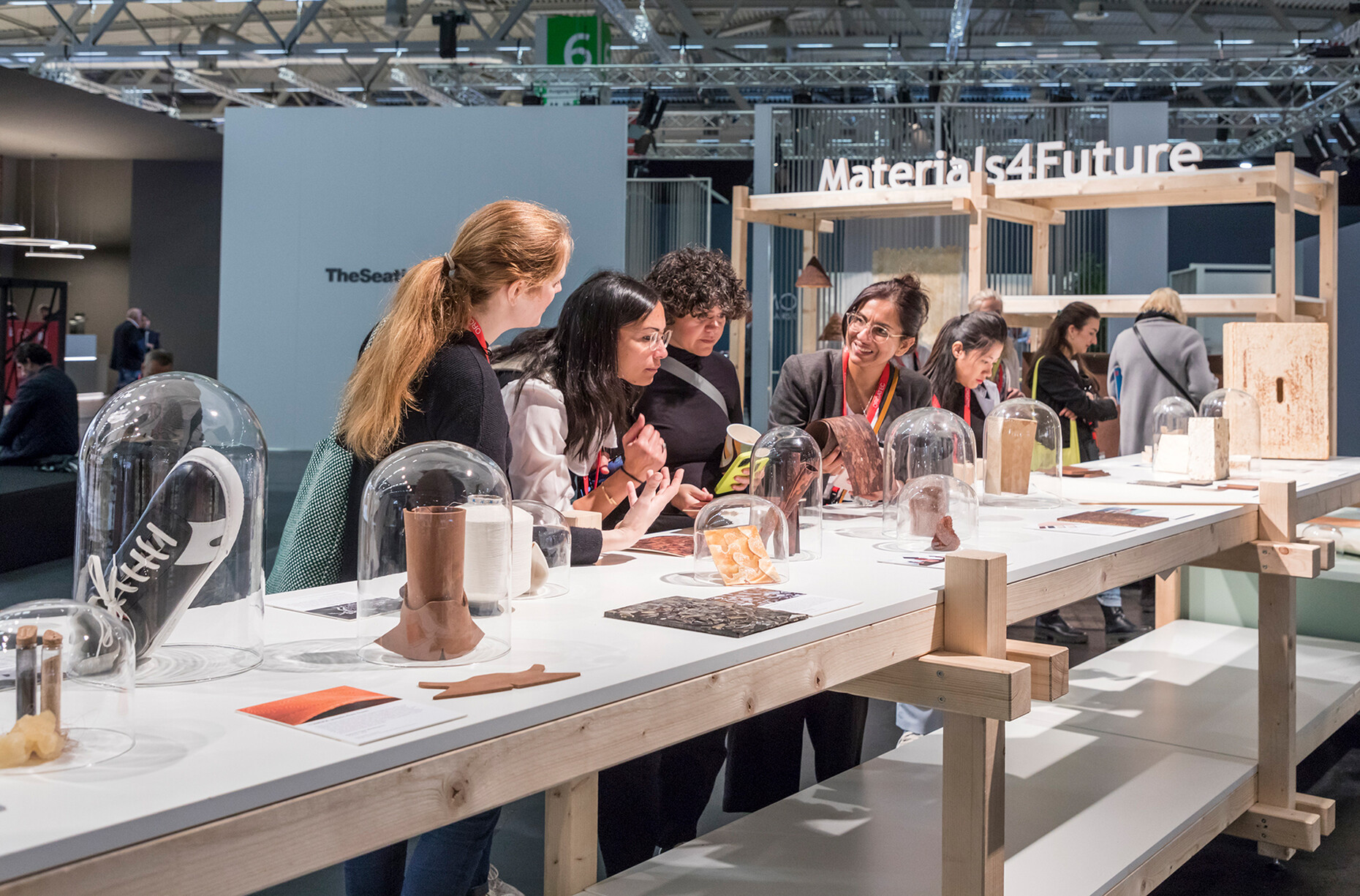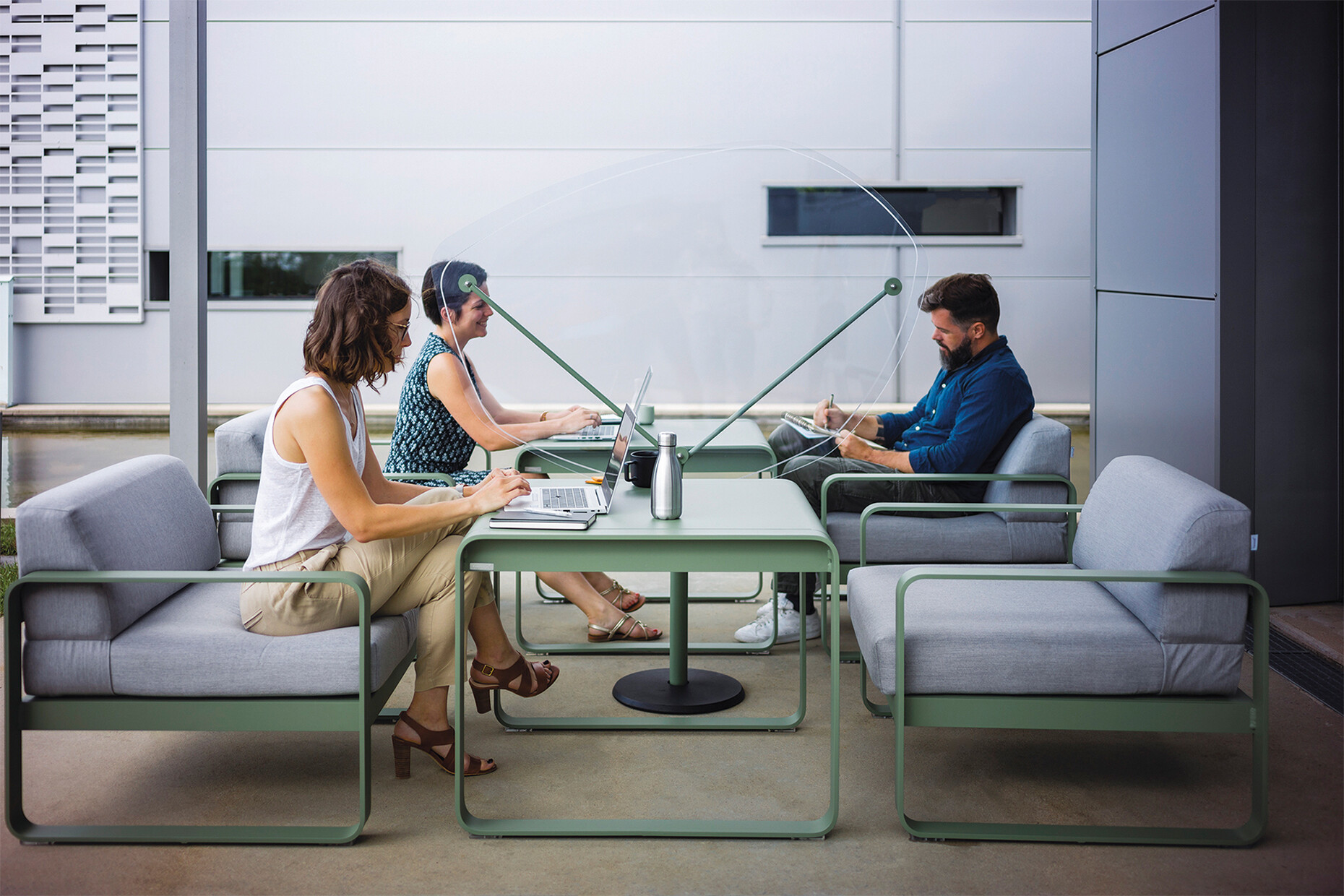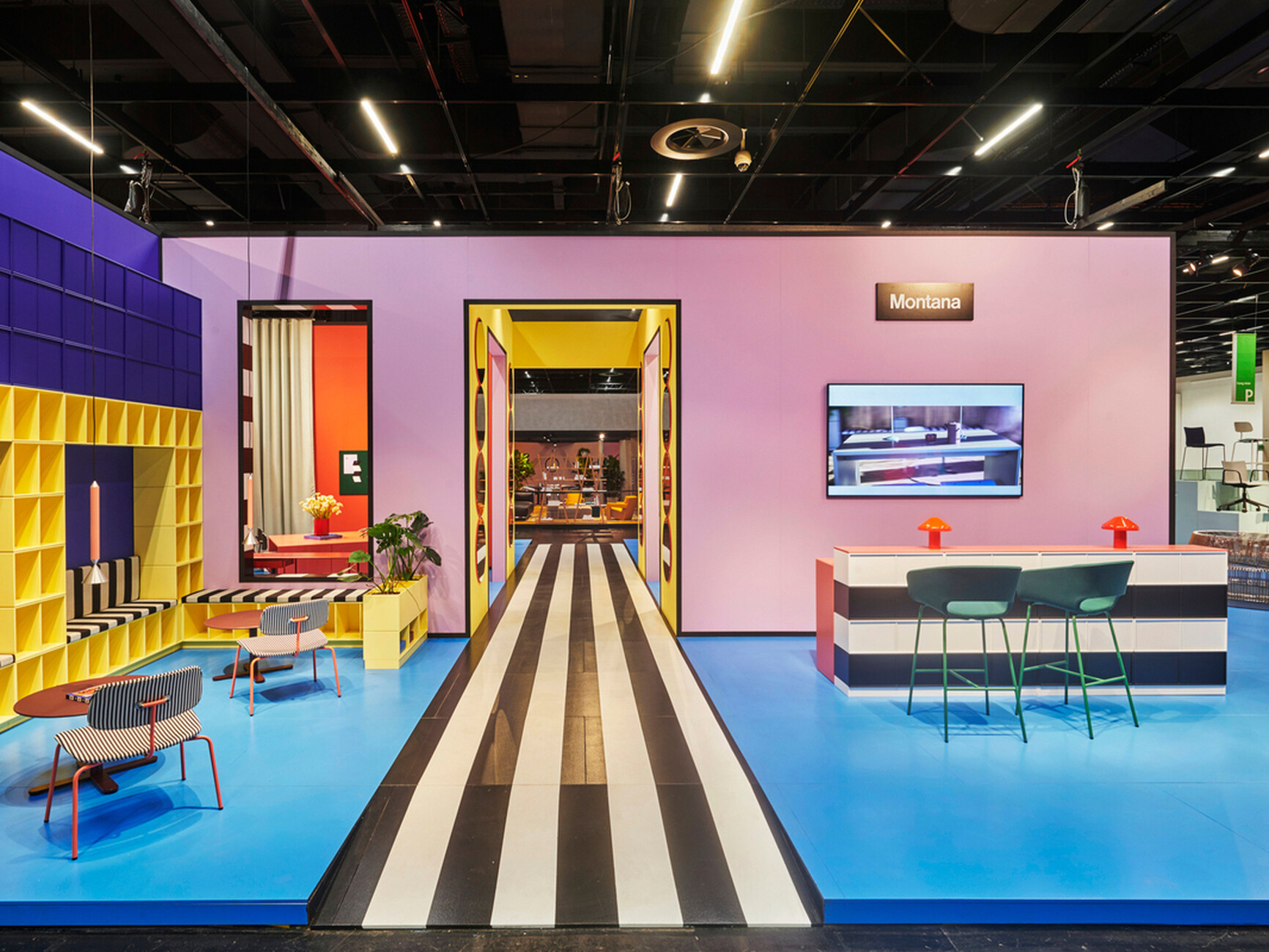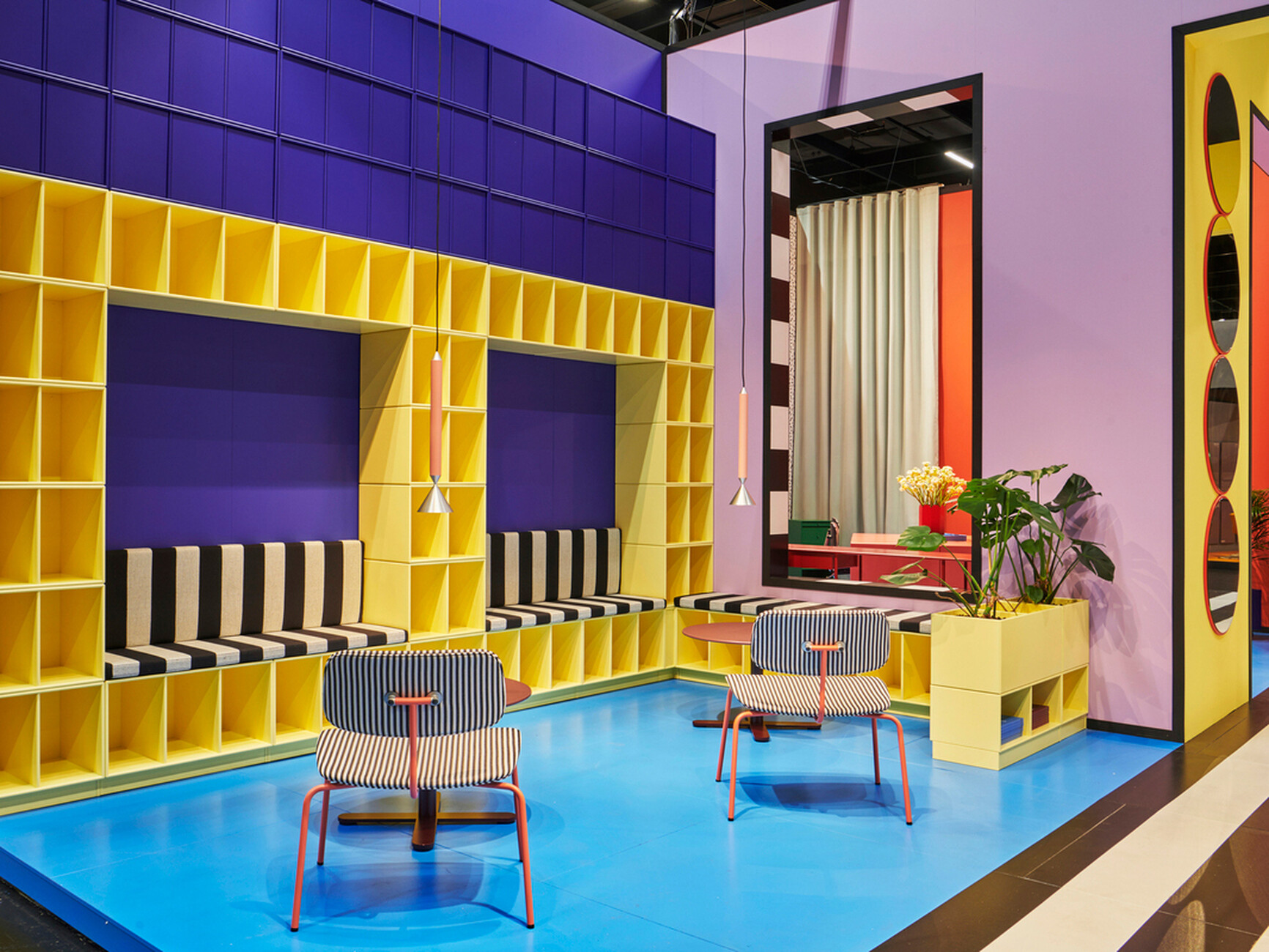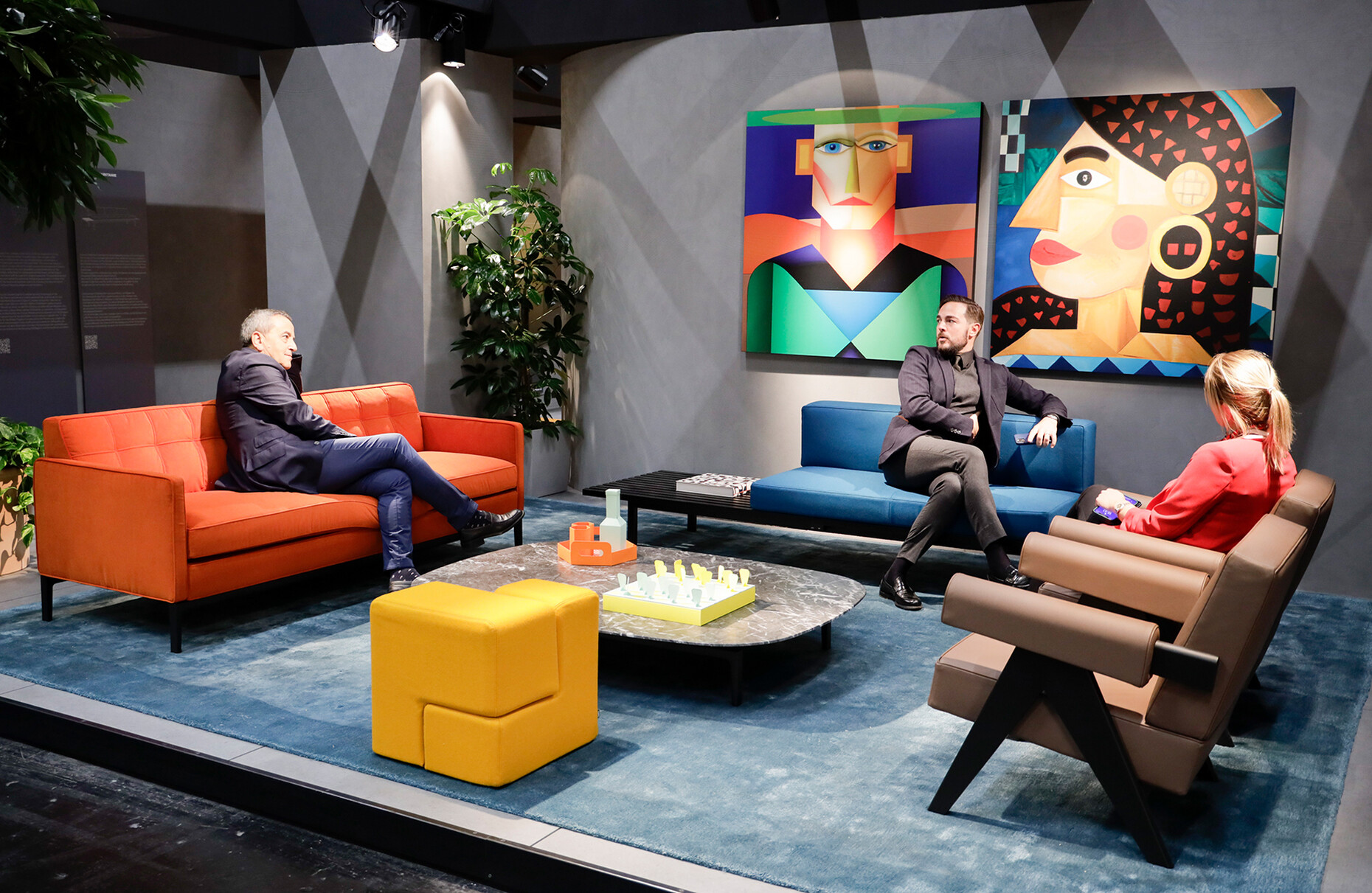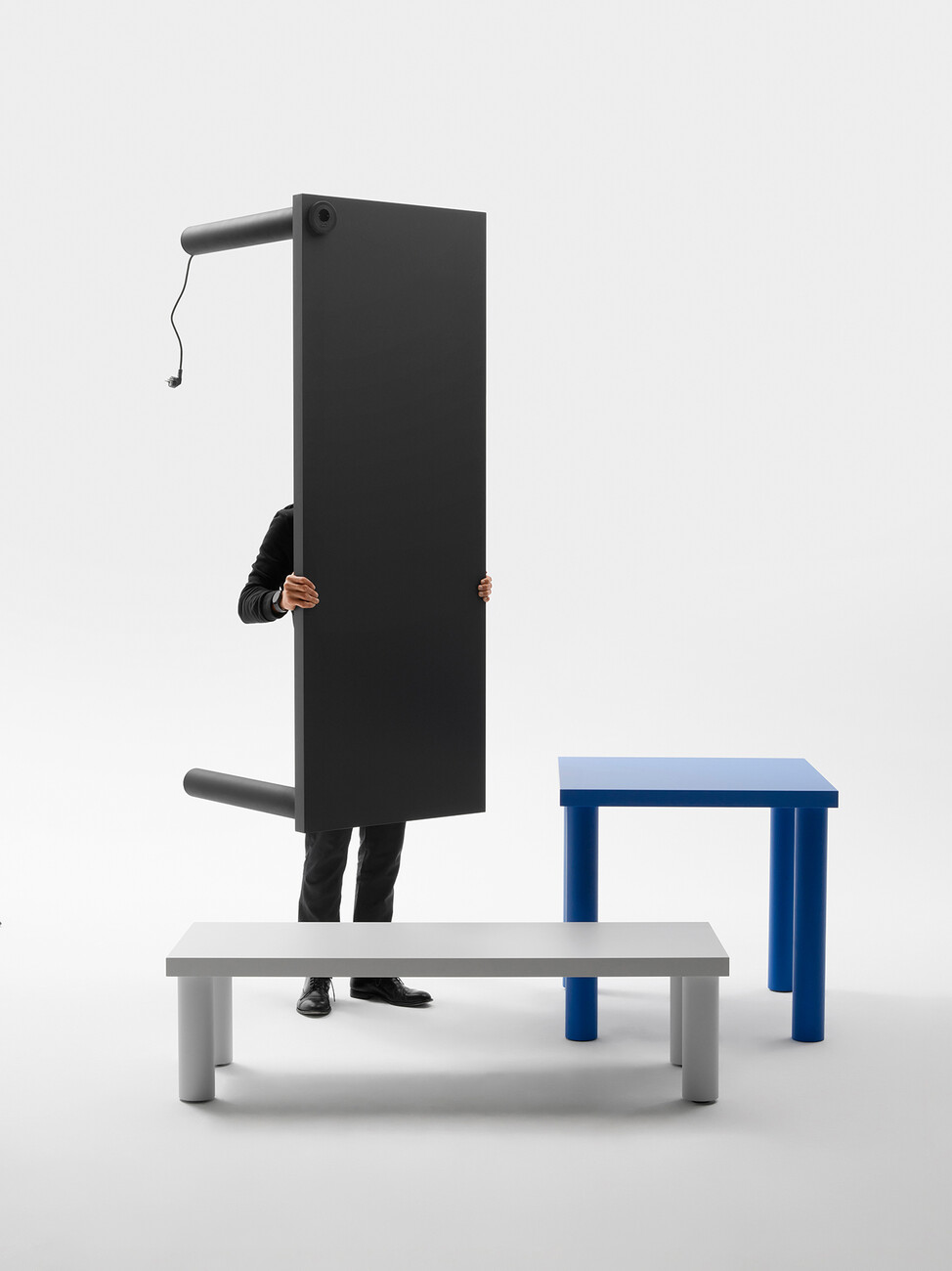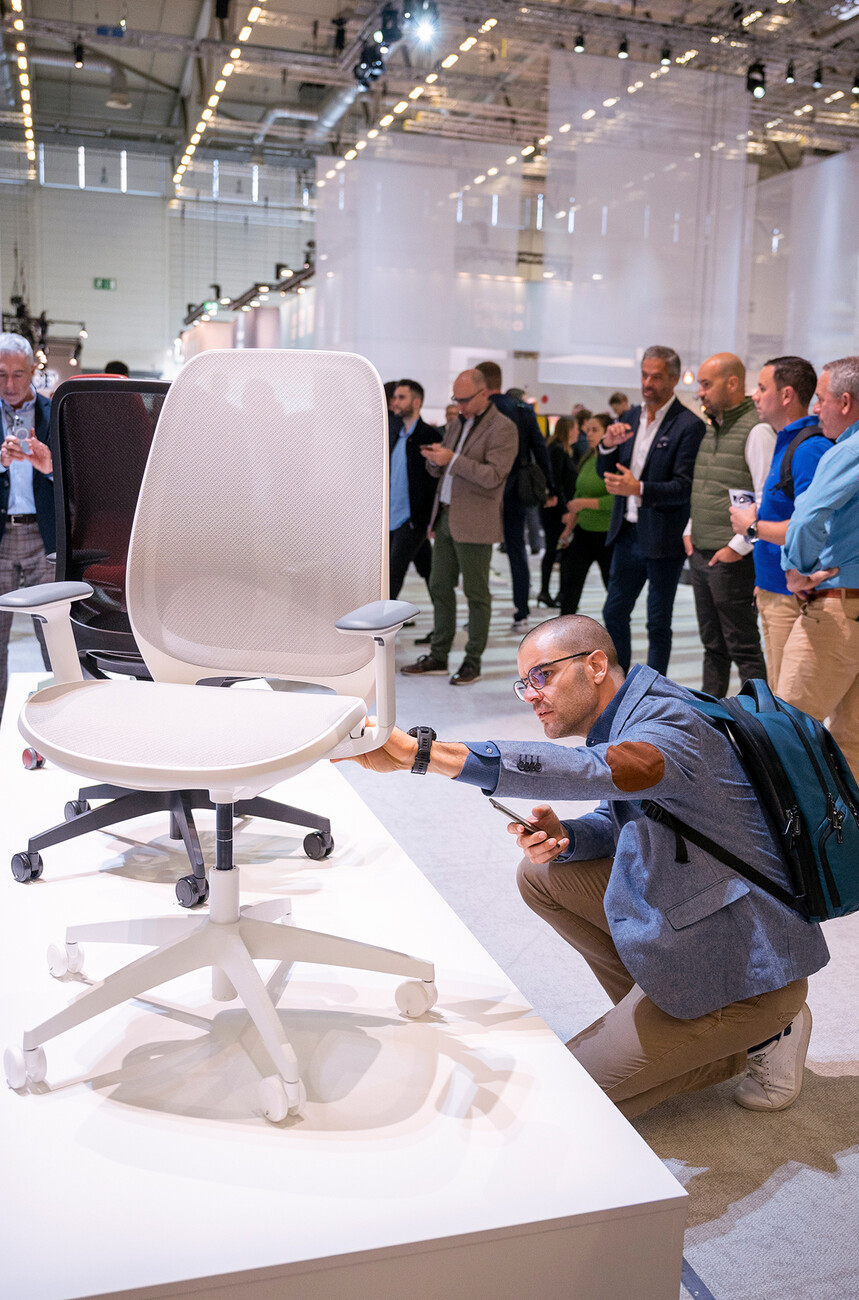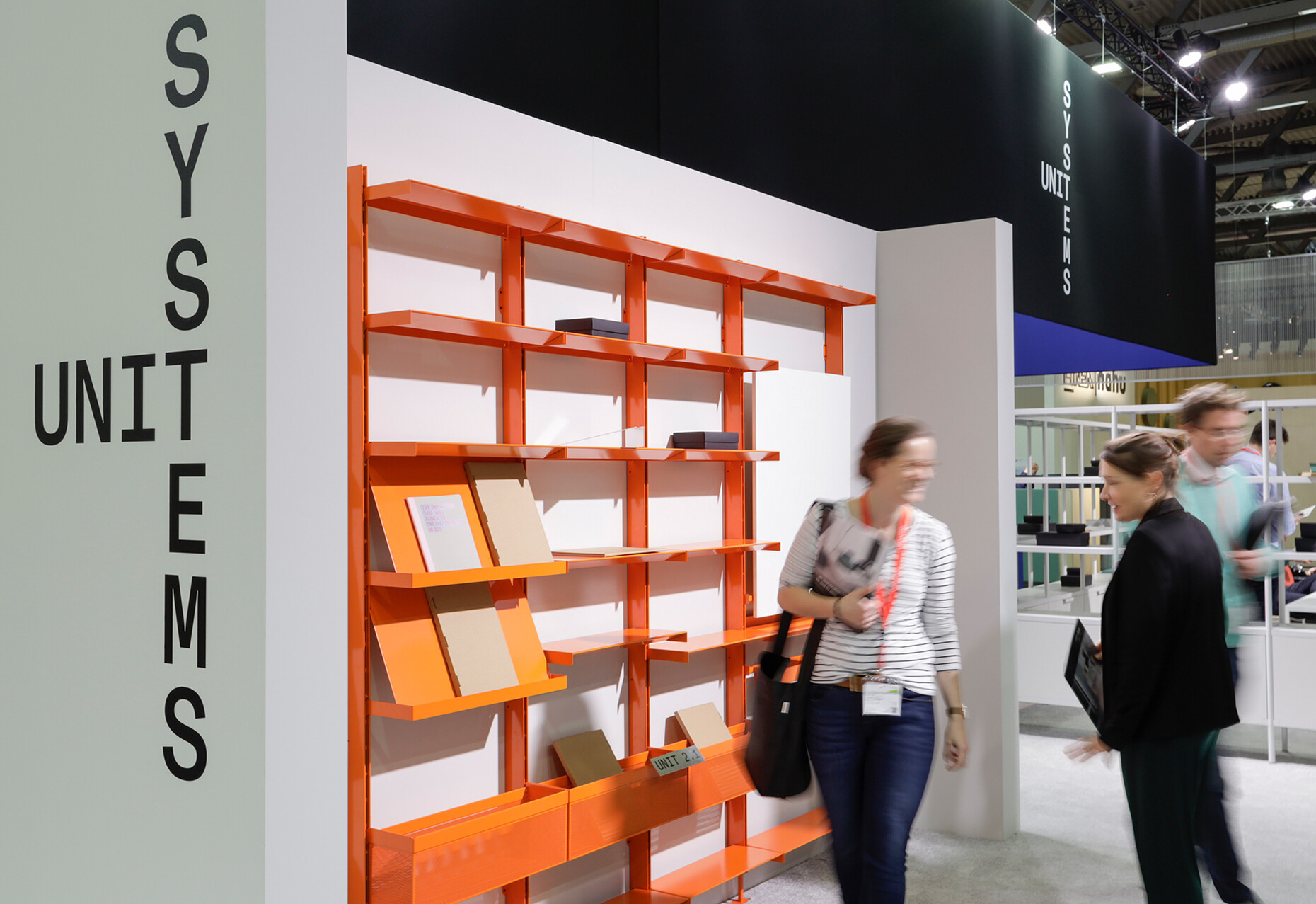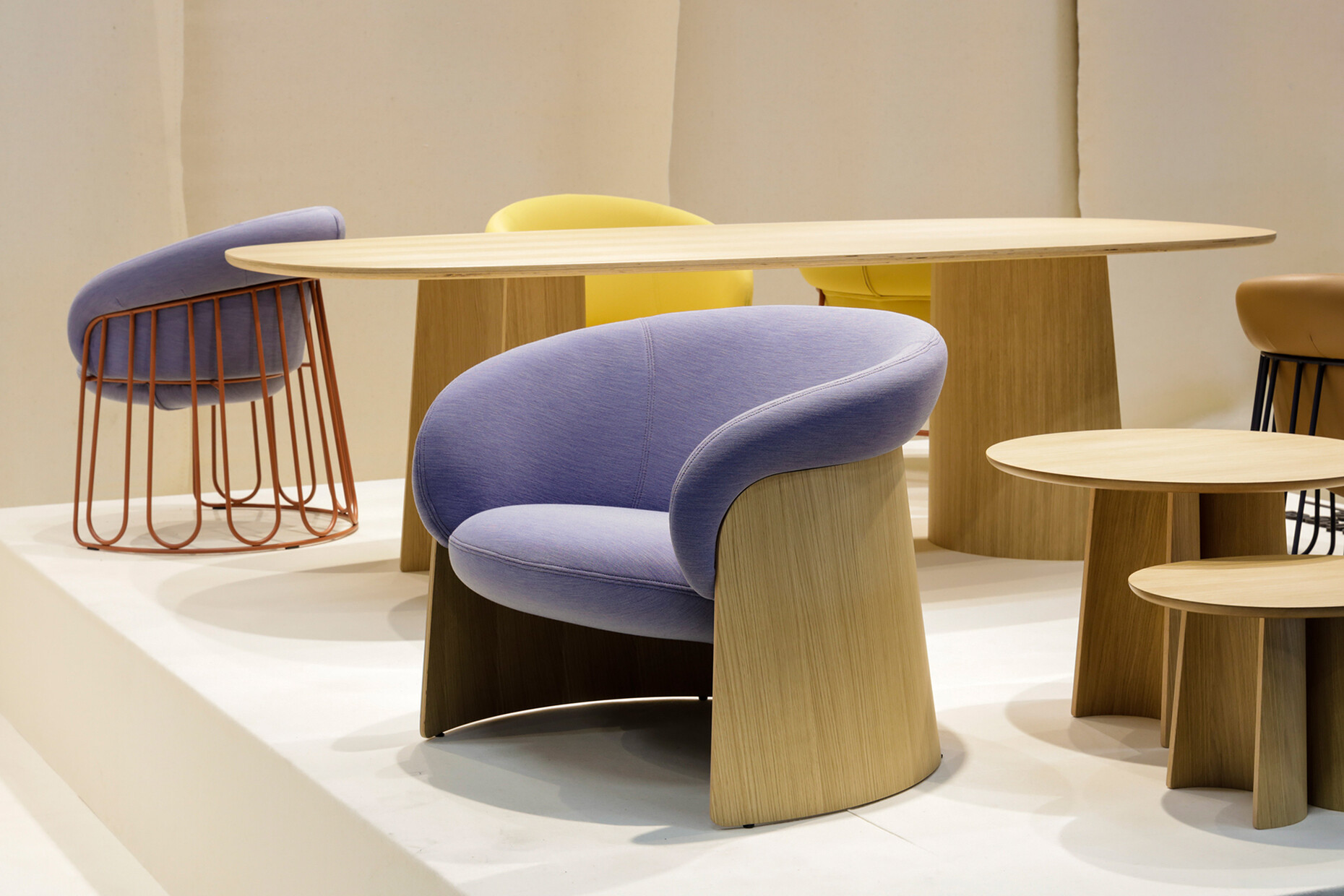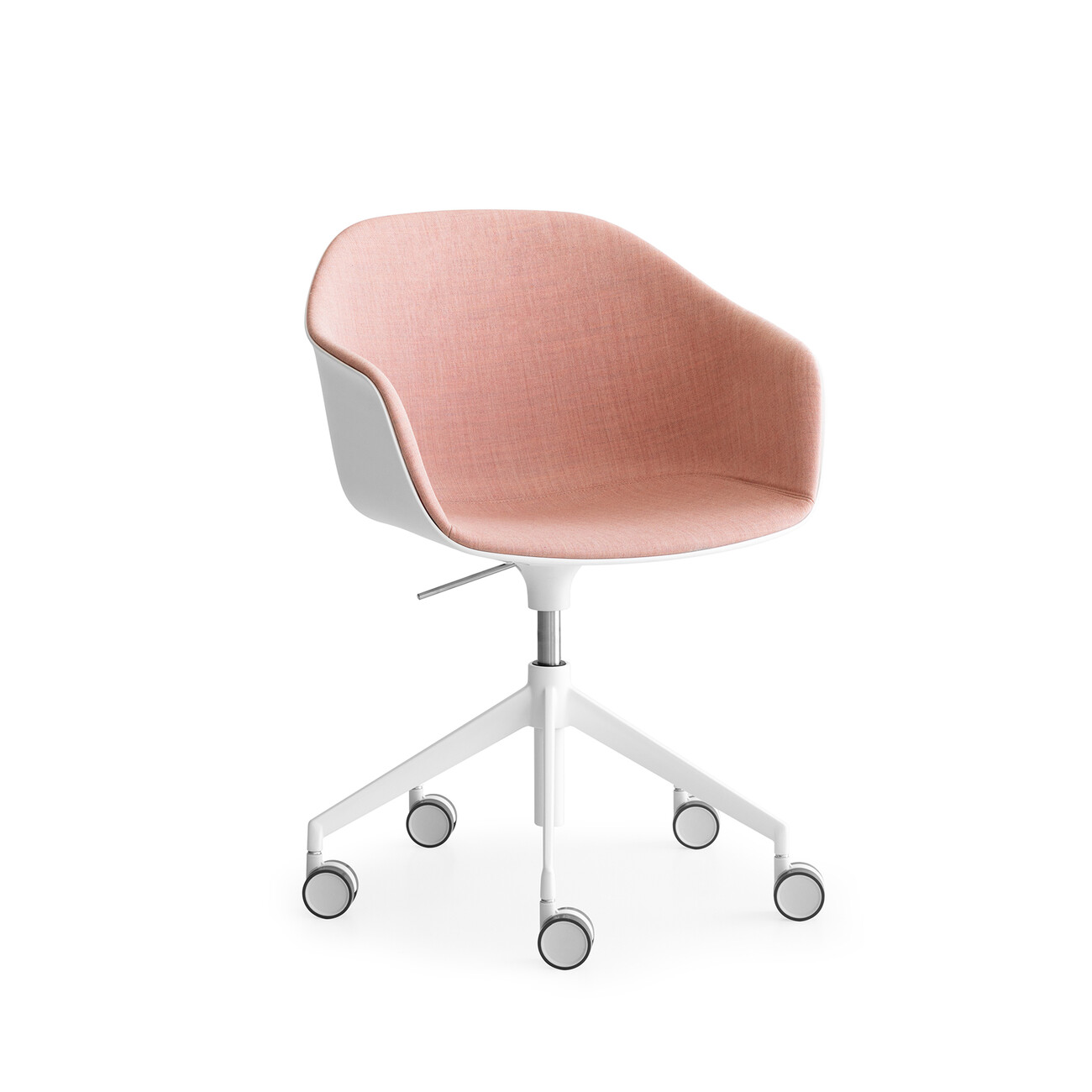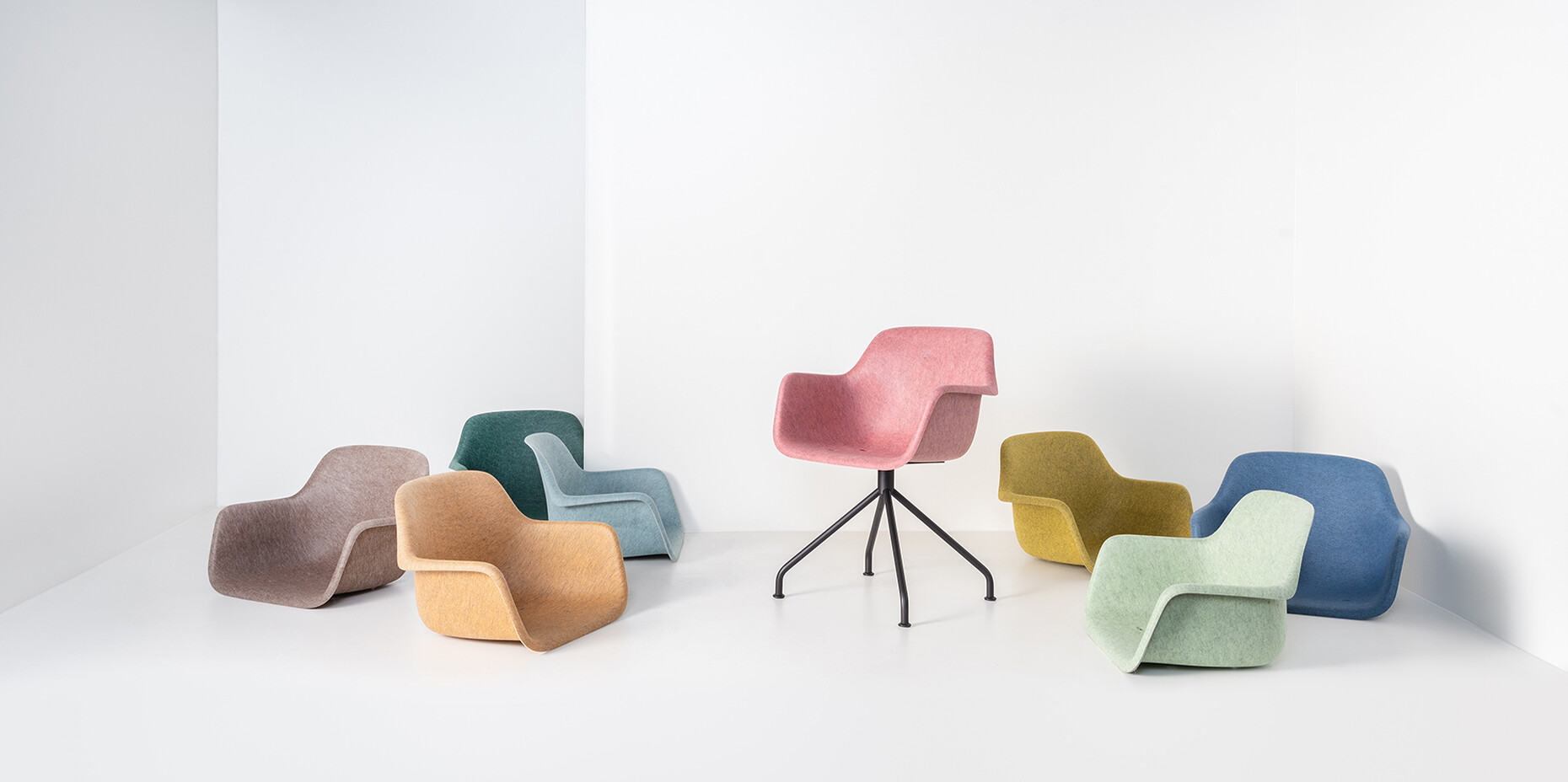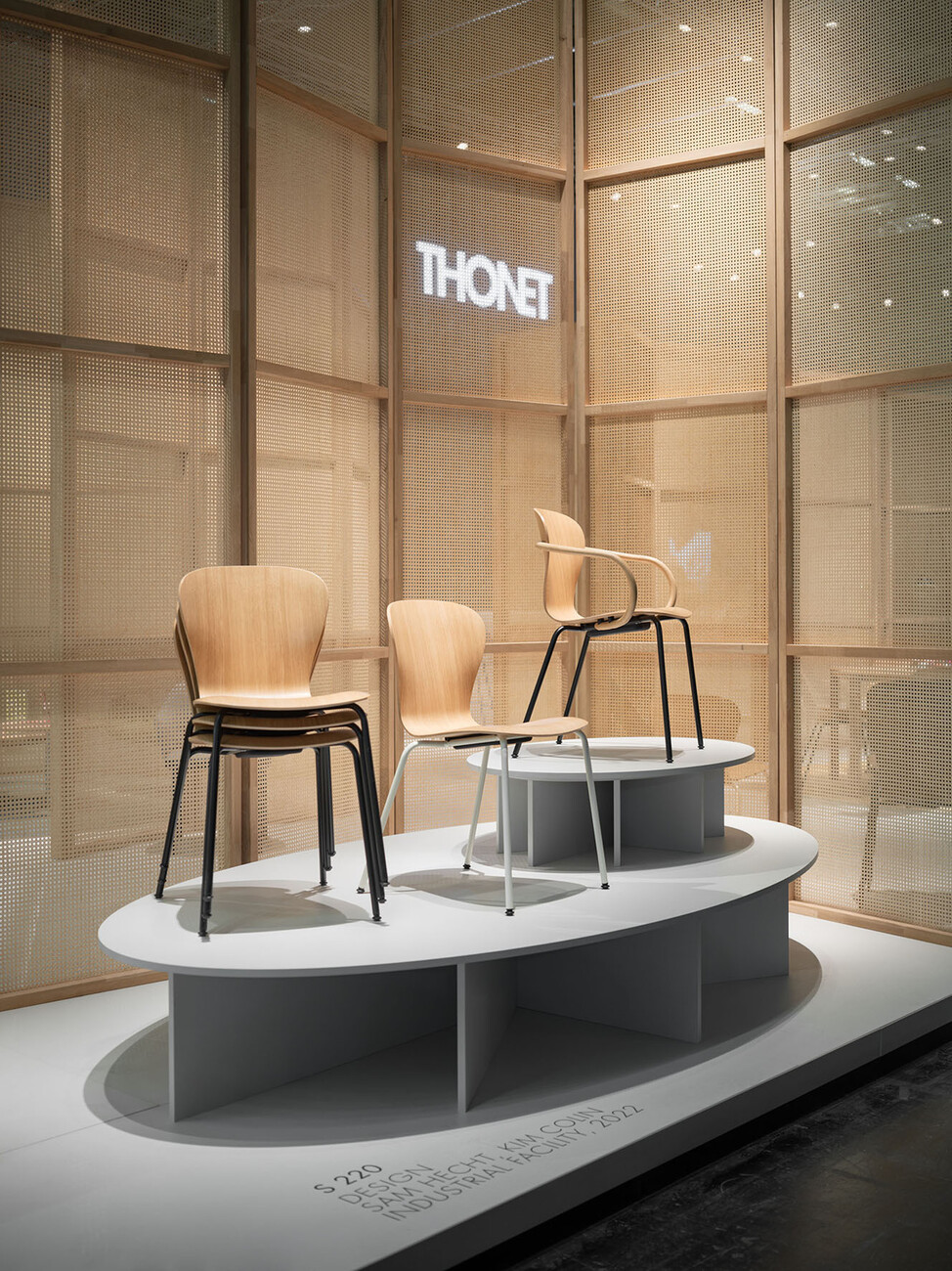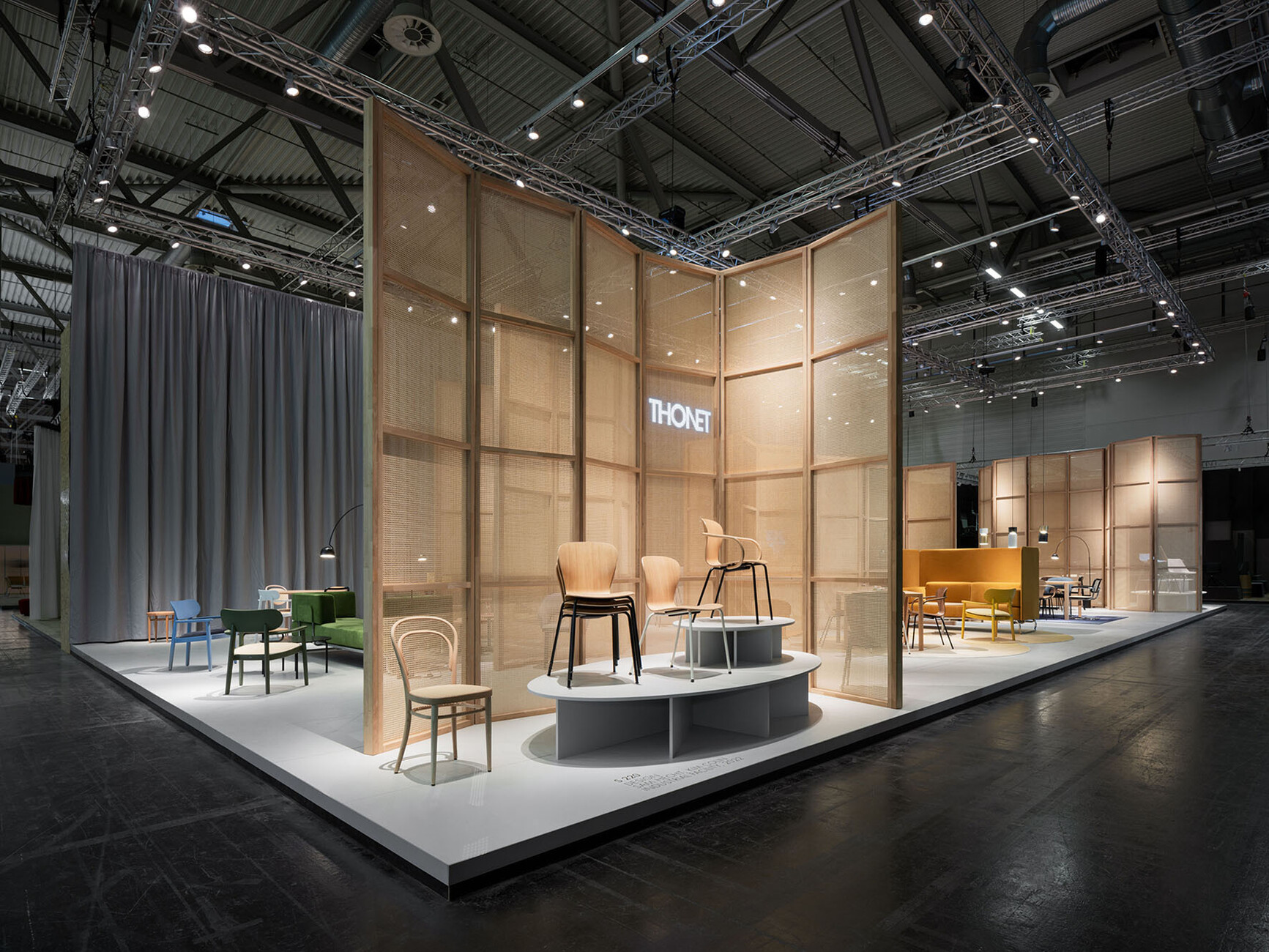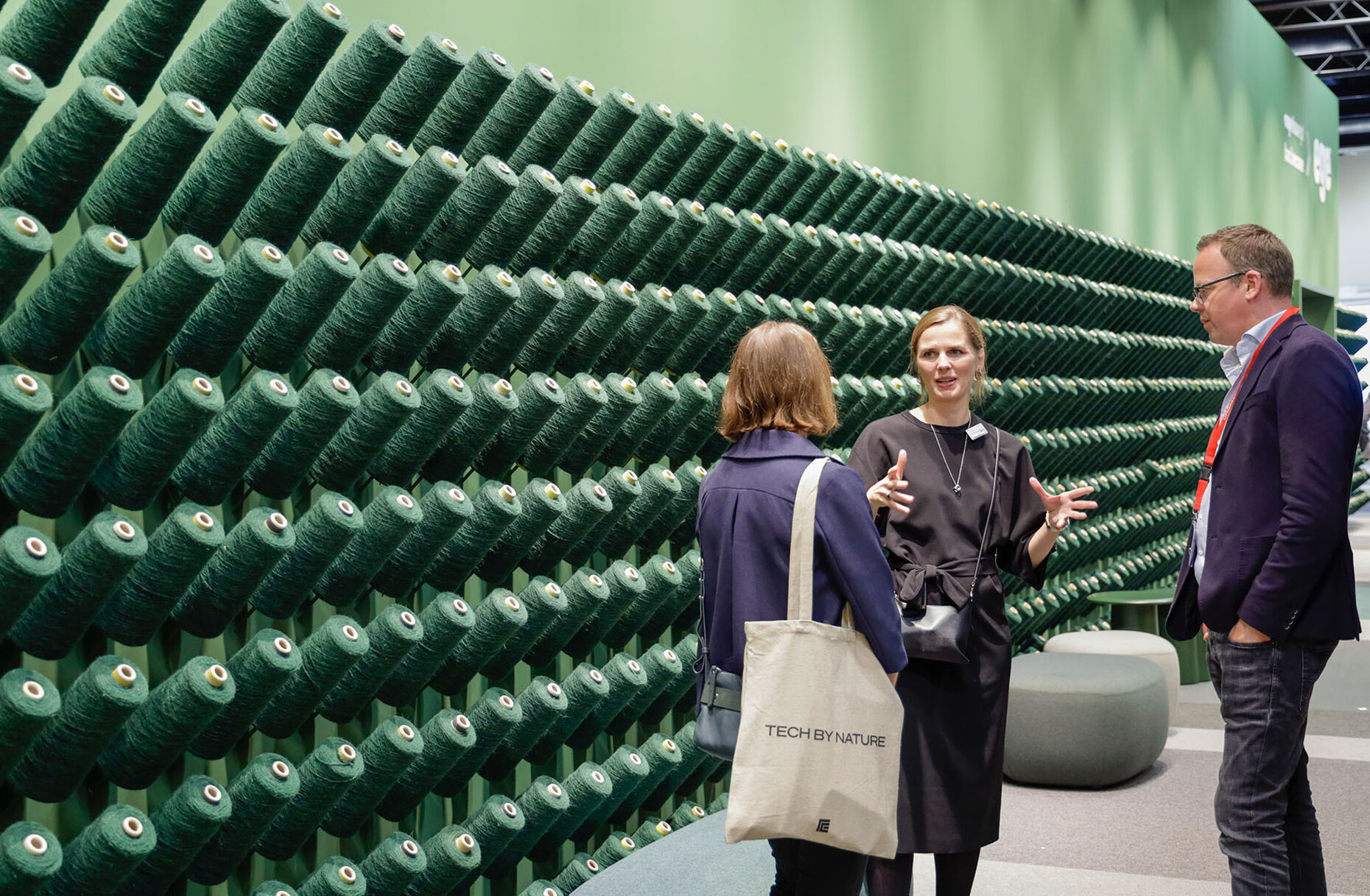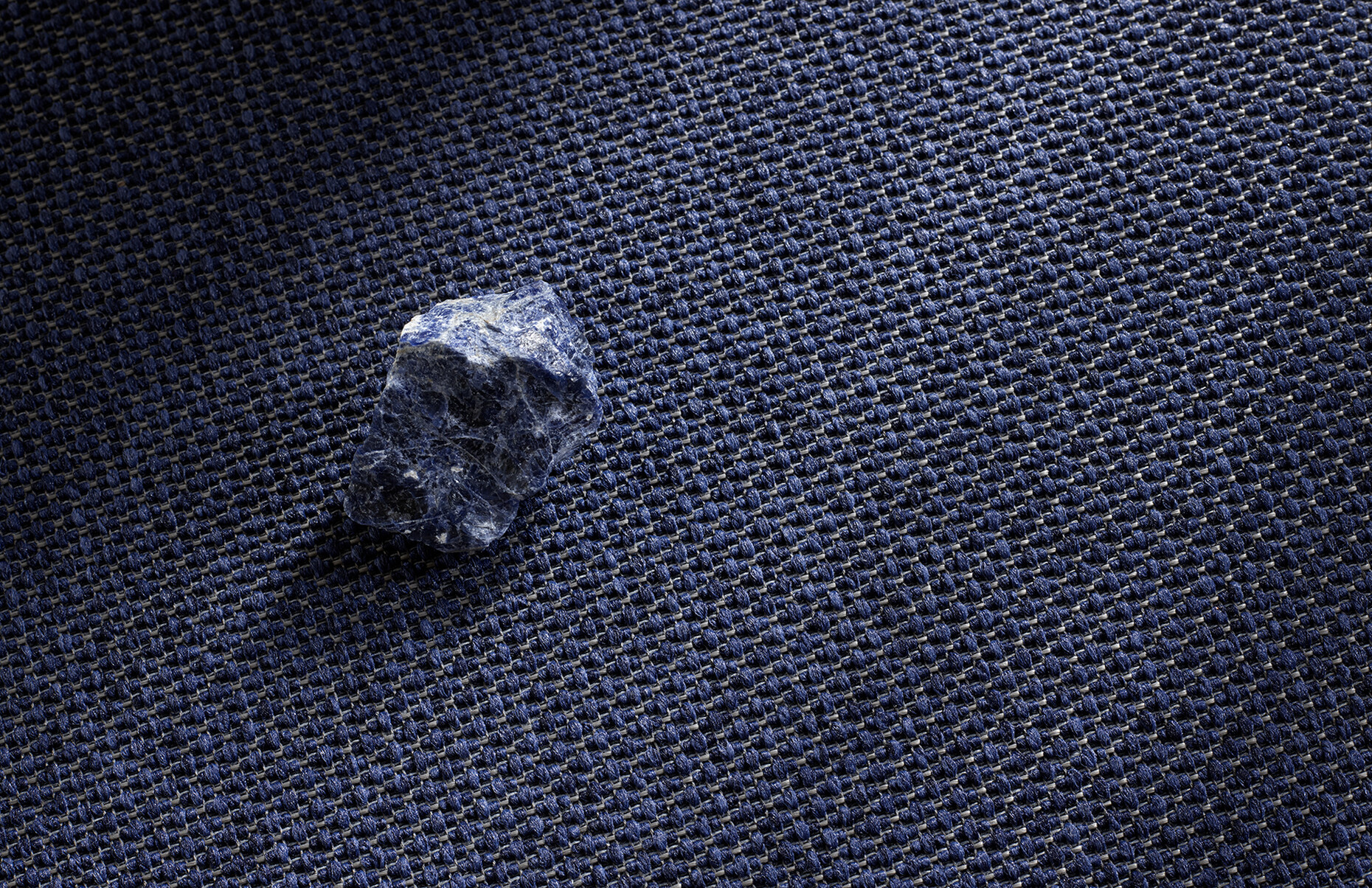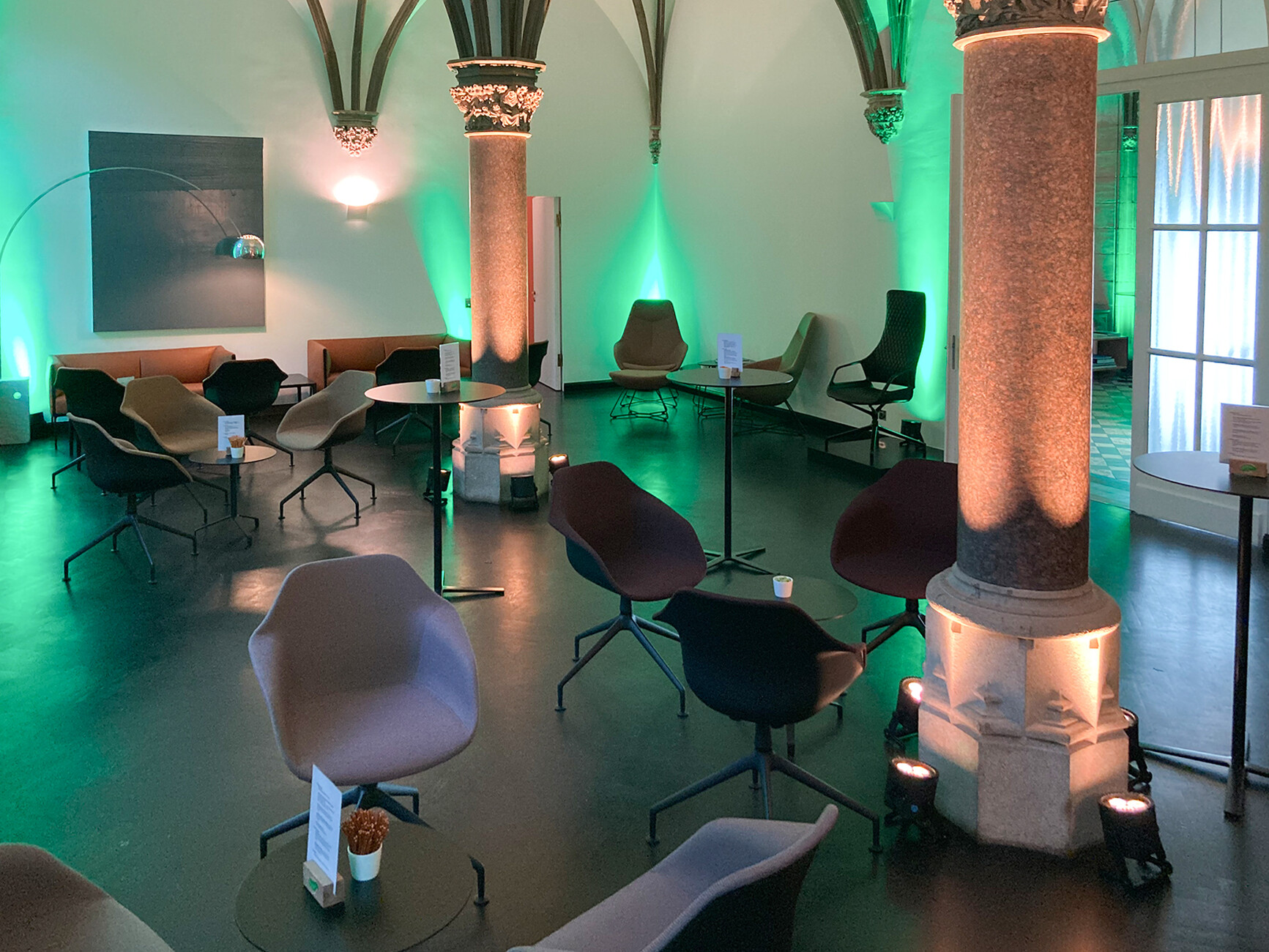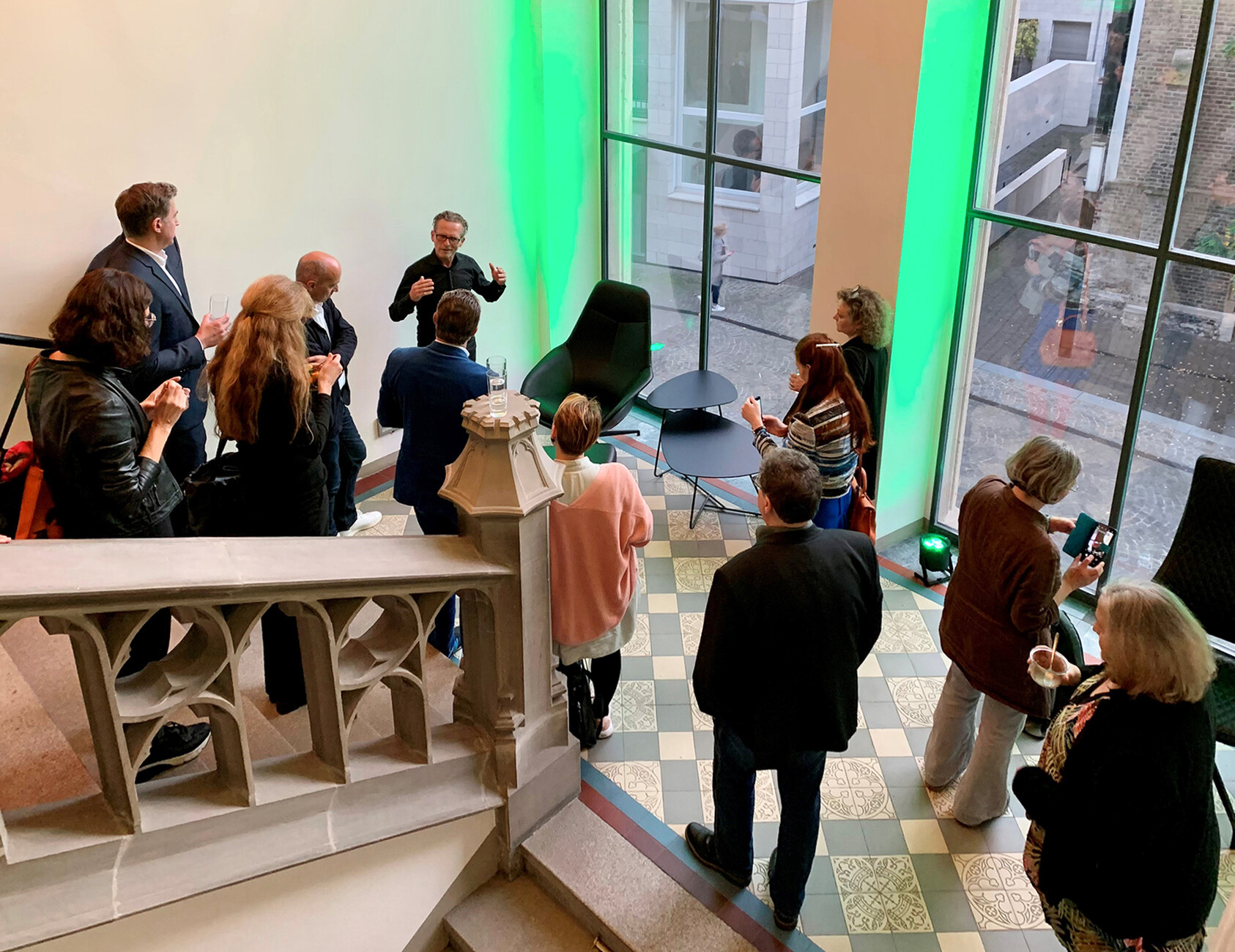ORGATEC 2022 – REVIEW
Flexibility for stability
Orgatec, the leading international trade fair for modern working environments, had to take four years off. Four years in which the topic of New Work gained momentum, the home office temporarily went from being an enticing-sounding alternative to a temporary constraint. A time in which digitalisation received a long overdue boost in many companies, we discussed whether classic offices for presence work would still be needed at all in the future and, in parallel, the disadvantages of physical absence became apparent in everyday working life. The chaos was mixed with a spirit of optimism and the desire for a reset of the working world. Away from the constant repetition of classic structures, towards individual, flexible solutions that promote well-being and enable a better work-life balance. Even before the pandemic, the trend was for the office to become more homely: More textiles, sofas and comfort were allowed to move in. "Maximum flexibility in the homely office" was the credo of Orgatec 2018, and that this movement has since maximised internationally in the face of involuntary cocooning quickly became apparent at Orgatec from 25 to 29 October 2022. 686 companies from 43 countries presented their ranges and instead of classic swivel chairs and massive conference tables, one saw mainly compact armchairs and modular sofas, organically shaped side tables and practical accessories, carpets with soft colour gradients, flexible lights and outdoor furniture that does not look out of place indoors. After the first tour, one was inclined to check the admission ticket to make sure that one had not accidentally visited the imm, the international furniture and interior design fair in Cologne.
The numerous surfaces in rich, pop colours also contributed to the homely atmosphere, and not only at manufacturers where one might expect it - like Montana, who presented the new colour style "Maximum Memphis" under the motto "Lets create playful spaces" – but also at Gumpo, who set strong accents at their stand, which was otherwise kept in black and white as usual. For example, in the form of the electrifiable "pipo" table and the "pony" stool with rotating writing surface, both from the pen of RelvaoKellermann. Many designers countered the uncertainty of our present with colour and optimism. In this context, flexible planting was not to be missed, as was the case with Victoria Azadinho Bocconi, who designed "Hevea", a flowerpot holder for Pedrali. This offers many variants, from a solo appearance to a green room divider, as up to six flower pots made of polypropylene can be hooked onto the central steel stem. Fermob went one step further and announced under the title "Garden Office" that every job deserves an outdoor experience. Cassina, meanwhile, presented "Cassina Pro", a collection whose products are intended to work both in the hospitality industry and at the desk. Versatility is required in order to be able to react to any scenery, between office and home, outdoors and indoors. As a result, the "office furniture" is no longer recognisable as such.
Withdrawal and dynamics
The table now also has life in its legs, stands on castors like "Move" by HofmanDujardin Architekten for Arco, light as a feather like "ONEMM" by Peter Kunz for Arper or has a height-adjustable tabletop and can be stylishly electrified with concealed cable runs, sockets and charging surfaces, like "Levo" by student Frederik Bruer. His work was part of the project "Design Meets Movement 2.0", which Linak presented in cooperation with the Bergische Universität Wuppertal. For the chair, parallel forms as if from a single mould are in demand, which offer the person sitting on them protection and comfort – shell chairs could be found like this in many designs at Orgatec 2022. For example, "Hug" by meneghello paolelli for S.cab, "Elephantino" by Neuland for Kristalia made of recycled plastic, the "Abril collection" by Patrick Norguet for Pattio, the "Fiber" armchair by Ikos Berlin for Muuto, "Seela" by Antti Kotilainen for LaPalma or "Yonda" by Studio Neunziggrad for Wilkhahn. What would Charles and Ray Eames have said about that?
Today's homely workplace naturally includes a lounge chair. Four years ago, this would probably have been used primarily to create an atmosphere in the office that oscillates between hotel lobby and co-working space. Now it exemplifies the new agenda of using office furnishings to create incentives to draw employees back into corporate spaces after months of home office. It can also be a striking expression of form, as in the case of the expansive "Wing Tip" lounge chair by Anderssen&Voll for LaPalma, "Ginger" by Sebastian Herkner for Ondaretta, whose shape is reminiscent of a high collar and plays with the contrast of hard and soft materials or the round model "LXR18" by Martin Ballendat for Leolux. The latter partially separates the backrest from the seat and adds a rotating oak tabletop to the armrests. Four years after the revolutionary "D1" by Stefan Diez for Wagner, a joy in the further development of classic forms is also visible in the cross-section of swivel chairs presented: thanks to hidden technology, the substructures are more airy, the lines more elegant and the seats gently adapt to the movements of the body, as in "Polar" by Jorge Pensi Studio for Pedrali or "Se:air" by Sedus.
Also airy are the modular systems that could be seen at Orgatec, as with "Unit Systems" by Formuswithlove and Oka: a toolkit for architects that gives them the freedom to design different furniture such as shelves, sideboards, room dividers or presentation areas on the basis of a connection and to convert them for a new use without much effort. With "Pavilion O", Kettal offers the possibility to create closed meeting areas or open workplaces with a flexible architecture in the room as required, which can be changed at any time. "Bool" by UnternehmenForm can be a shelf, room divider and sideboard at the same time: a central connecting account made of die-cast aluminium gives the tubular steel structure unlimited configuration and application possibilities. In the Designpost, Stefan Diez also demonstrated the versatility of the modular construction kit "d2", which can be used to develop numerous structures and furniture on the basis of honeycomb panels made of shiny aluminium or cardboard. These are held together by specially developed aluminium profiles, finished with a nylon fitting. In addition to the already familiar straight-lined shelves, desks and presentation areas, he now realised arches with the "d2" system, which covered passageways and created stylish office islands with inserts made of translucent polycarbonate. Another highlight from Wagner was the "W3D" stool: a 3D-printed, movable active stool made of bio-plastic that can be adjusted to any body size. Hadi Teherani's dynamic design shows the possibilities that 3-D printing now offers in design: A hexagonal seat merges seamlessly into the sculptural base, which looks as if fabric panels are draped around it.
Hallgeir Homstvedt and Runa Klock have also found new forms of expression for abstracta with the "Holly" lamp: A light sculpture consisting of large, luminous frosted glass spheres and their non-luminous, acoustic counterparts, filled with textile scraps and recycled polyester and encased in 3D knitted fabric. Acoustics and lighting thus come together in a sustainable luminaire that has an aesthetic that is likely to find favour in restaurants or hotels. The "Ambrosia" linear luminaire system by Ciszak Dalmas for Marset, which contrasts the clear form with warm, diffuse lighting, can also be customised for any room. Schulte Elektrotechnik also showed new retrofitting options for the "EVOline Circle80", which ensure that the three-in-one solution consisting of socket, double USB charger and cable aperture offers even more possibilities for the arrangement according to requirements. Thonet and Carl Hansen & Son showed how to carry the legacy of a traditional company gently into the future, yet with their own signature: Sam Hecht and Kim Colin from Industrial Facility took up the classic lines of the iconic bentwood chairs "214" and "209" with the "S220" chair for Thonet and reinterpreted them with current material technology as a stackable, reduced model made of plywood. The result is an elegant chair with an ergonomic seat shell and lightweight steelwood frame. Meanwhile, Carl Hansen & Son showed the reissued "Foyer" series made of oak wood, light leather and handmade buttons by Vilhelm Lauritzen, which was once designed for Radiohuset in Copenhagen and provides a charming accompaniment in any architecture.
From buzzword to requirement
Multifunctional in use, flexible in design, sustainable in material – a few years ago, this triad was still an almost impossible task for many office furniture manufacturers. At this year's Orgatec, the topic of "sustainability" was instead a natural part of the presentations, just as carpet disappeared from the aisles of the exhibition halls and most of the stands in favour of waste reduction. Many products showed a single-variety construction, partly made of recycled materials and without glue, which can easily be broken down back into its components for the circular economy. In addition, certified wood, water-based lacquers and local production to avoid long transport routes. It was a little surprising to see the changes that are possible for the majority of manufacturers instead of just a few pioneers in the face of the climate, raw materials and energy crisis.
Meanwhile, Werner Aisslinger used room dividers made of wood and raffia for Thonet to create a pleasantly airy and sustainable architecture, while Jab Anstoetz realised the installation "JAB StopMotion!" with kadawittfeldarchitektur for which textiles, flooring, Climatex upholstery fabrics and acoustic materials from the portfolio were displayed like mobiles suspended above the stand. With "Climatex", the company also presented the world's first Cradle to Cradle certified textile fabric. Camira showed, inter alia, the new fabric "Main Line Twist", which is woven from pure wool and harvested flax – it can be used for covers as well as panels and curtains. Kvadrat Really presented "Textile Tabletop", a robust circular material for all horizontal applications, which is made from discarded cotton and wool and is completely recyclable. Giulio Rudolfo not only updated the range of his wool upholstery fabric "Steelcut" as "Steelcut 3" for Kvadrat with 19 new colours, but also developed the checked version "Beat", which is made of 100 percent recycled polyester and will be presented in 2023. Rohi exhibited "Milkyway", a three-metre-long repeat made of 94 percent virgin wool, whose pattern of over 100,000 star-like dots is reminiscent of a Milky Way. Since the rapport is not repeated once along the entire length and is composed of two accent colours, every cut-out is different.
Ege Carpets creates yarns from old fishing nets, industrial waste and old carpets and designs the collections to interact with other hues, materials, light and space. In this context, textile designer and colour alchemist Margrethe Odgaard has put together 56 colours that relate to each other and thus remain interesting in the long term. Interface could officially announce that it is a climate-neutral company, certified according to the internationally recognised PAS2060 standard. The climate neutral products include the new "Fresco Valley" collection, which reduces the carbon footprint of premises and is inspired by natural surfaces such as wood grains and rock layers. "Fair Furniture" was proclaimed by Vepa with the "Hemp" chair collection, whose seat shell is made of hemp and resin, thus consisting of a renewable raw material and is completely recyclable. Also to be discovered on the stand was the "Blue Finn" chair, which is made of 85 per cent of the disposable packaging waste produced in healthcare institutions. "You shouldn't think about sustainability, you should just do it," says Gertjan de Kam, Design & Development Manager at Vepa.
"Just do it" – Kinnarps also achieved this, dedicating the presentation area for its six brands to sustainability, holistic ergonomics and life cycles in the office industry under the motto "Moving Workplaces Forward" instead of just a product show. In parallel, a specially equipped truck was unveiled to recover and refurbish used swivel chairs. The truck is part of Kinnarps' "Circles of Change" sustainable circular economy concept, which offers a range of different circular services to extend the life of furniture. Likewise, daily presentations took place on work-specific topics, such as sustainability in the office furniture industry. "Flexibility is the key to stability," is a Kinnarps motto. As an office furniture manufacturer at a trade fair after a four-year break, primarily putting the effort for circularity instead of the products up front - you can only have respect to so much courageous commitment.
In addition to the already established manufacturers, exciting material studies could also be discovered: The future agency Haute Innovation dedicated a special area at Orgatec to the title "Materials4Future – Sustainable materials for the future of work" – and showed such as "HygroShape" by the ICD University of Stuttgart, the first concept for self-forming furniture, the research project "convertible wood hybrid" by the Department of Architecture at the Technical University of Kaiserslautern, surfaces made of sea grass by Metis Seagrass or 3D printing based on plant-based plastics by Aectual Circular. Another exciting idea is that of product designer Ineke Hans, who, together with Circuform, has devised a deposit system for her "Rex" chair made of recycled plastic that allows customers to return the furniture to a station after many years of use and have part of the purchase price refunded. The old chairs can then either be repaired or recycled. Palmberg proved that a sustainable stand architecture can also be created from the office's products and created transparent outer walls from black metal paper baskets, which were positioned horizontally and connected to form an ensemble.
Using networks
Learning from each other and discussing current challenges and opportunities together – this year's Orgatec offered numerous opportunities for this, such as in the form of lectures, congresses and talks, for example on the part of the Industrieverband Büro und Arbeitswelt e. V. (IBA). At the Design Post, too, guests had the opportunity to enter into an exchange with creatives and manufacturers, as at Arper under the mottos "Interpreting The Project of Living – How do we want to live?" and "Designing The World We Live In" or at Kvadrat in the form of an exchange on sustainability with Wickie Meier Engström, Kvadrat Really Director & Partner. Likewise, Design Post hosted an international panel that addressed materiality and its central role in directing the furniture and furnishings industry towards a more sustainable future. Part of it were designers and architects such as Ineke Hans, Hadi Teherani, Marius Myking, Charlotte von der Lancken or Shawn McKell from the impact tech start-up Doconomy, which invests in new measures to combat climate change.
As part of the "AW Designer of the Year 2022" award, the internationally successful industrial designer Stefan Diez, a pioneer of the circular economy in design, was able to realise an extensive show of work in the unique atmosphere of the Design Post parking deck and stage his work for Vibia, Midgard, Brunner, Magis or Wagner, among others. At the same time, Cesare Bizzotto and Tobias Nitsche from From Industrial Design were awarded the AW Young Designers prize and were able to present their work to the public side by side with Diez Office. Beyond the period of Orgatec, another special exhibition may be discovered until 21 November 2022, which the jeweller Wempe has realised together with the Vitra Design Museum: In the Stollwerck-Haus in the Rhine metropolis, a retail design by Ettore Sottsass, the co-founder of the Memphis Group, was discovered and carefully uncovered in the course of the renovation. The special setting is completed with the exhibition: "Ettore Sottsass. Memphis Design 1981 – 1987". Dr Mateo Kries, director of the Vitra Design Museum, curated the show and selected 13 exhibits from the Memphis Group collection, such as the "Ashoka" lamp or the "Teodora" seating furniture.
Thus, there was a lot to see at Orgatec, both in Cologne and at the Design Post and in the exhibition halls themselves. Despite the long absence of the trade fair, the storm of new products did not materialise, as many manufacturers had in the meantime shifted their presentations to other platforms and events that take place on an annual basis – such as the Salone del Mobile in Milan or the 3daysofdesign in Copenhagen. Also missing were some of the industry's battleships, such as Vitra. Wilkhahn selected a unique presentation in the magnificent neo-Gothic building of "The Qvest" in the centre of Cologne instead of exhibiting in the halls of the Cologne Trade Fair. That situation, though, also gave smaller exhibitors the opportunity to step out of the shadows of the big ones with their shows. Overall, the performances showed the great efforts being made to find a universal answer to the numerous challenges currently facing the industry. A profound turnaround á la Memphis is certainly not possible in the short term in the increasingly complex industry, but the commitment of the manufacturers and the forward-looking ideas of the creatives certainly demonstrate that it is possible to optimise processes and structures together, even in just a few years. Orgatec 2022 was another important step on this path.
